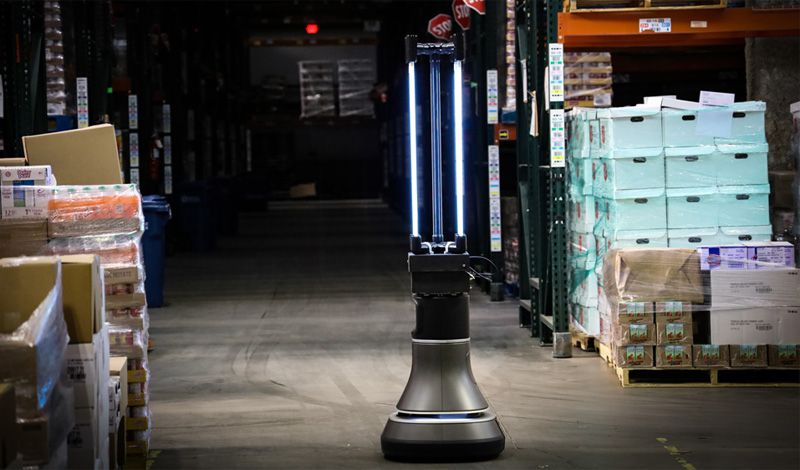In today’s video I want to show you symbiosis of bicycle and walking robotic creature Strandbeest!
If you like this video don’t forget to sucscribe smile
Production Music courtesy of Epidemic Sound www.epidemicsound.com
In today’s video I want to show you symbiosis of bicycle and walking robotic creature Strandbeest!
If you like this video don’t forget to sucscribe smile
Production Music courtesy of Epidemic Sound www.epidemicsound.com

Tesla provided the first clues that radar could be trained to do more than just detect objects straight ahead. After the death of Joshua Brown on a Florida highway in 2016, Tesla tore up the Autopilot software created by MobilEye and pivoted from a camera-based to a radar-based system. In the process, it learned how to bounce radar signals under the car directly ahead to “see” what the next car in line was doing. That way, if a truck or SUV is blocking the view of the road ahead, a Tesla with the updated system could still detect if a car further up the road slowed or braked unexpectedly and take appropriate action.
Hyundai unveiled the first look of a vehicle with robotic legs that will let it walk or crawl over treacherous terrain.
Hyundai Elevate can roll along on extended legs or retract them to be driven like a car. Extended legs could also be used to climb or crawl while keeping the passenger compartment level.
Watch the video to know more.
With every droplet that we can’t see, touch, or feel dispersed into the air, the threat of spreading COVID-19 persists. It’s become increasingly critical to keep these heavy droplets from lingering—especially on surfaces, which are welcoming and generous hosts.
Thankfully, our chemical cleaning products are effective, but using them to disinfect larger settings can be expensive, dangerous, and time-consuming. Across the globe there are thousands of warehouses, grocery stores, schools, and other spaces where cleaning workers are at risk.
With that in mind, a team from MIT’s Computer Science and Artificial Intelligence Laboratory (CSAIL), in collaboration with Ava Robotics and the Greater Boston Food Bank (GBFB), designed a new robotic system that powerfully disinfects surfaces and neutralizes aerosolized forms of the coronavirus.

Over the past decade or so, researchers have been trying to develop techniques that could enable effective collaborative strategies among teams of robots. One of the tasks that teams of robots could complete better than individual robots is simultaneously searching for several targets or objects in their surrounding environment.
The ability of a team of robots to collectively seek and identify numerous targets at once could be useful for a wide range of applications. For instance, it could aid surveillance applications and help to better track individuals or vehicles.
Researchers at Tongji University and University of Stuttgart have recently devised a systematic framework for enabling more effective multiple target search in swarm robots. This framework, presented in a paper published in IEEE Access, is based on the use of a mechanical particle swarm optimization method and artificial potential fields.
Dr Alexis Kirke of the University of Plymouth has demonstrated the use of teleportation in music jamming.

For many comparatively simple ai applications, that means that the cost of training a computer is falling, says Christopher Manning, an associate director of the Institute for Human-Centered AI at the University of Stanford. But that is not true everywhere. A combination of ballooning complexity and competition means costs at the cutting edge are rising sharply.
Increased complexity and competition are part of it.
Technology Quarterly Jun 11th 2020 edition.
Tesla’s Autonomy Day in April 2019 gave supporters of the company a look into Elon Musk’s vision of a fully-autonomous future. While the event featured the company’s strategies for the future as it prepares to “free investors from the tyranny of having to drive their own cars,” the $100 billion agriculture sector is also looking into sustainable, self-driving technologies that would revolutionize the industry.
Santa Monica, California-based lawn and landscaping startup Graze is developing a solar-powered, fully-autonomous lawn mower that requires no human interaction. The battery-operated, fully-autonomous mower is being developed by Graze CEO John Vay who has an extensive background in landscaping, and CTO Roman Flores whose past employers include NASA and the Caltech Curiosity Mars Rover Team. The two minds are developing the product in an attempt to revolutionize commercial agriculture as we know it.
Disinfecting spaces such as warehouses is especially critical during the COVID-19 pandemic, but doing so while keeping workers safe can be challenging. So MIT’s Computer Science and Artificial Intelligence Laboratory came up with a solution: use a robot that employs UV-C light to disinfect surfaces and neutralize aerosolized forms of coronavirus.
Through a collaboration with Ava Robotics and the Greater Boston Food Bank, CSAIL mounted a custom UV-C lamp on an Ava Robotics mobile robot base. The lamp neutralizes around 90% of surface microorganisms, according to CSAIL. The robot is initially operated by a remote user and subsequently works autonomously, and can disinfect 4,000 square feet of warehouse space in half an hour.